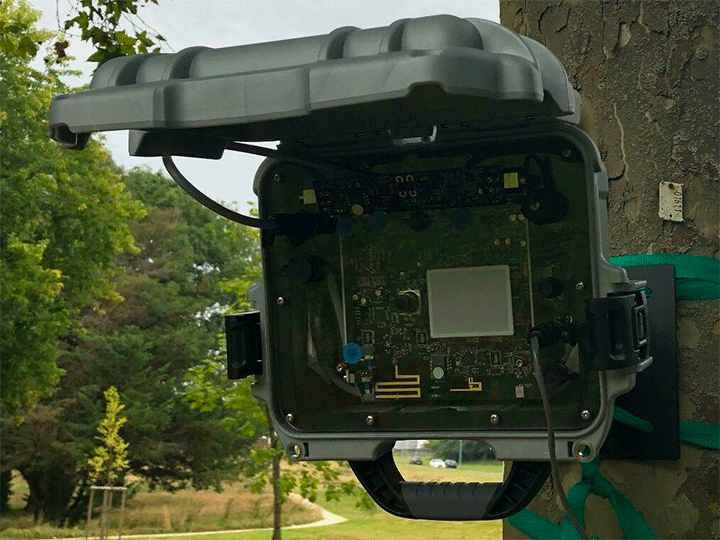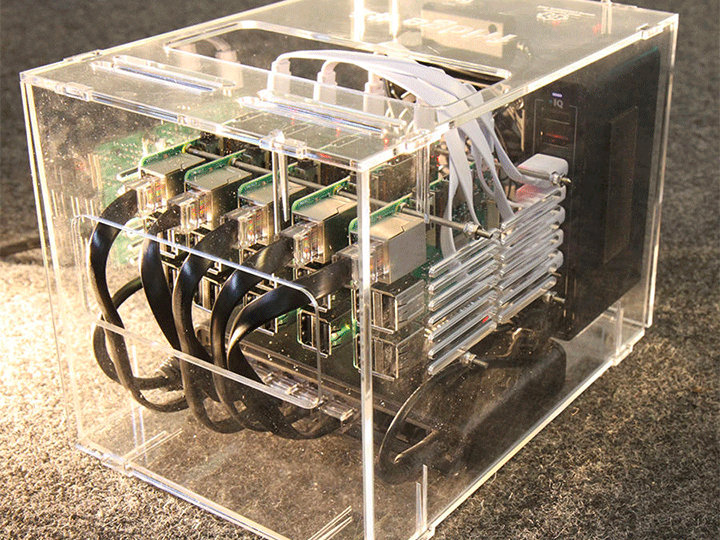
The Col du Lautaret mountain pass has a natural area known as an ‘observatory’ that is studied by scientists.
From global warming and desertification to deforestation, pollution and species extinction, since the beginning of the industrial era human activities have upset the balance of life on earth, making the planet less habitable. Provided with Equipex funding[1] through the French government’s PIA3 future investment plan, Terra Forma is a platform for observing the natural world. Its sensor networks are designed to improve the measurement of phenomena involved in four key areas: soil erosion, water resources, chemical pollution and biodiversity.
“This is a large-scale project involving a lot of scientists from a wide range of different fields”, explains Guillaume Pierre, professor at the University of Rennes and head of Magellan[1], an IT research team specialising in tailored data processing. “Some specialise in plants, for others it’s animals, while others specialise in geology, biology or soil chemistry. For years now they have been seeking to develop a better understanding of these ecosystems through in-depth study of natural areas which they term observatories. There’s one in the Col du Lautaret mountain pass in the Alps, for example. In these areas Terra Forma intends to deploy innovative, frugal and energy self-sufficient sensor networks which are capable of processing data in situ in real-time. This data will also be sent through radio transmission to a cloud for storage or analysis at a later stage.”
This next gen technology will centre around two platforms designed over the past few years by two Inria project teams. Developed by Taran[2], a team specialising in optimising the performance of embedded systems, SmartSense comes in the form of a unit fitted with sensors. Having been deployed for experimental purposes at Inria and the Irisa, this network can be used to estimate and manage the electricity use of buildings based on the use of rooms and devices. The architecture employed for SmartSense is also highly energy-efficient, and is used for initial pre-processing of data.
Designed by Magellan, LivingFog is a fog computing platform capable of processing data straight from the source. Developed as part of the EU H2020 project FogGuru, it can be run on a cube containing five Raspberry Pi microcomputers, meaning there is no need to export data to remote cloud infrastructure. “We’ve used this technology in a smart city context in Valencia in Spain, where thousands of Linky-style meters were deployed in order to improve the use of water, a rare and precious resource. We explored how LivingFog could process data without having to transmit it away from these sensors.”
Managing a changing energy budget
But in order to contribute to Terra Forma, these two platforms will need to learn how to cope without one pretty important aspect: “being plugged in. We've only ever worked in cities before, where there are no issues with finding a power supply. But you don't get sockets in natural environments, and so we will need to adapt and be able to operate autonomously. This will most likely involve the use of solar panels.” A major change.
“What makes it difficult to work with this type of energy is that it is intermittent, as there is no sun at night. There’s also much less of it during winter than there is during summer. From a scientific point of view this is an interesting challenge, as our platform will need to deal with a changing energy budget. This is uncharted territory for us. We might be used to working on the energy efficiency of cloud platforms, but that involves set quantities of energy. Here we might need to switch some of our micro-computers in LivingFog off at certain times, or temporarily halt radio communications, which by definition use up a lot of energy. We could also put certain sensors to sleep for long periods when nothing interesting is happening.”
Once capable of being controlled, the network could be used in all sorts of different ways. “Imagine a hydrologist, for example, waking up sensors when a river is in spate. Or a researcher changing the data acquisition frequency depending on the properties they want to observe, or switching on cameras because marmots have just appeared.”
A multidisciplinary PhD thesis
A multidisciplinary PhD straddling IT and environmental science and funded by the University of Rennes was launched in early October to study possible solutions to these new energy constraints. It is worth noting that the university is a stakeholder in Iris-E, a project that was selected as part of the ‘Excellence in all its Forms’ programme funded by PIA3 and which is aimed at supporting the environmental transition. Seeking to validate the theoretical work, an experimental network will be set up in the wetland along the river which flows through the scientific campus in Beaulieu. “We want the conditions to be realistic, so nothing will be able to be plugged in.”
In support of this research Inria recently launched Smart’Obs, a Technological Development Initiative that will “enable us to have an engineer working on the project for two years. Aside from scientific questions relating to the strategy for activating and deactivating systems, there is a major systems and material engineering component. To give you one example, SmartSense sends its data using Ethernet cables, but it will need Wi-Fi capability. The equipment will also need to be adapted in order to give it a level of energy self-sufficiency and to enable it to withstand weather conditions. Up until now it’s always been used indoors. There is also a significant amount of software development ahead of us in order to ensure that earth scientists are able to use the tool for their research work. We need to produce a reliable solution capable of being used in the field, for a wide range of different uses.”
Moving towards a digital twin
Guillaume Pierre has already started thinking about another idea: “a digital twin. The state of the natural environment is being measured, and it's being measured in real-time in order to feed a mathematical model of this same environment, making it possible to conduct analysis. The initial aim is to check to see if the model is correct: based on the input data, does the output data produced by this model correspond to what is observed in the real world using the platform? If yes, then the model has been validated, and we can then play around with the parameters. What would happen, for example, if all of the other conditions remained the same, but the temperature was increased by 5°C? This could be used to study phenomena relating to climate change. Any time I’ve discussed this with researchers in the natural sciences, you can see them getting excited.”
[1] Magellan is an Inria, CNRS, University of Rennes, Insa Rennes and ENS Rennes team and a joint undertaking with Irisa.
[2] Taran is an Inria, University of Rennes and École Normale Supérieure de Rennes (ENS Rennes) team and a joint undertaking with Irisa.

